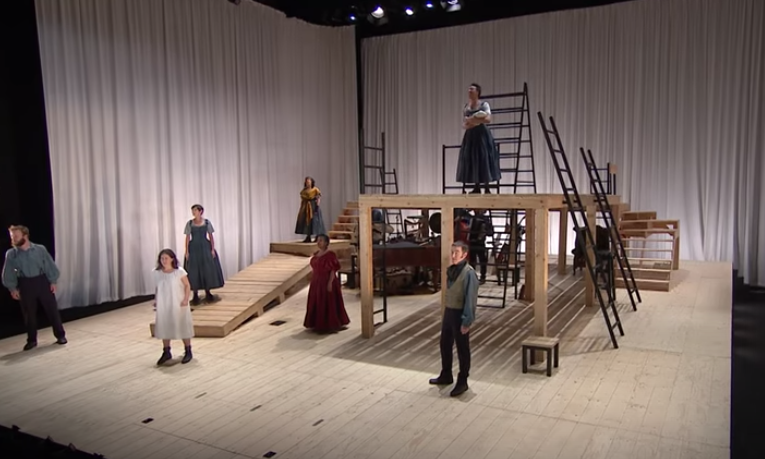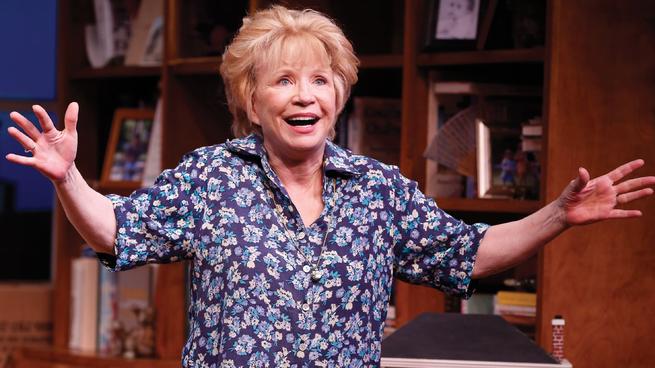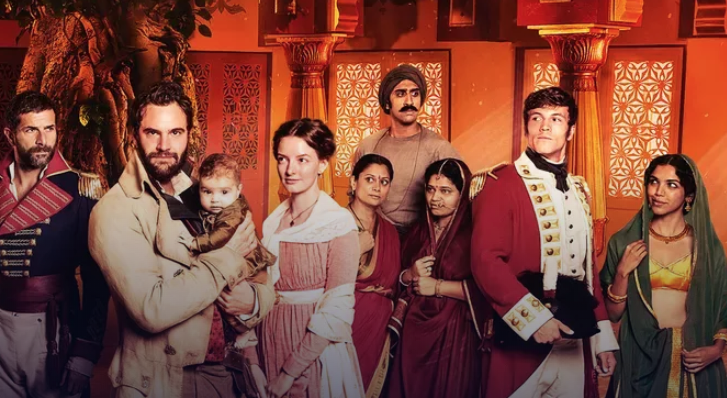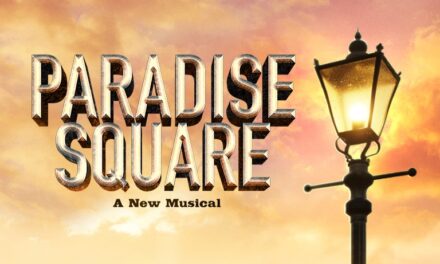
by Hazen Cuyler
We’re isolated. Locked inside wrapping our heads around this strange new world. Live theatre hovers in limbo and its immediate course remains difficult to predict. To help us heal, The National Theatre has provided audiences around the world free access to their filmed theatre productions. Their latest installment on YouTube is the celebrated production of Charlotte Bronte’s Jane Eyre directed by Sally Cookson.
Charlotte Bronte’s classic novel follows Jane Eyre from birth through adulthood. Jane’s parents die from typhus. Her uncle takes her in. He dies and his wife becomes her caretaker. Almost no one is kind to Jane here. She’s sent off to a religious boarding school for orphans and eventually finds her way to Thornfield Hall where she becomes the governess of Mr. Rochester, with whom she later falls in love.
As Jane, Madeline Worrall is a knot of relentless, socially conflicted suffering. Look into her forever-distressed eyes at any moment throughout this three hour epic. Beads of sweat puddle and fall from her brow not only from stage lights and layered outfits but from Jane’s constant mental strain. Rochester describes Jane. “I see at intervals the glance of a curious sort of bird through the close set bars of a cage. A vivid, restless, resolute captive is there. And were it but free it would soar cloud high.” Ms. Worrall’s eyes dart, her face is strained even listening. Her arms clung tight, angled like wings afraid to spread.
Matched in eccentricity and volatile loneliness, their relationship is a masterclass in chemical romance. Felix Hayes’ Rochester is a intelligent, crotchety, socially-detached aristocrat – a loner whose best friend is Pilot, his dog (played with uplifting charm and attention to detail by Craig Edwards). A match strikes. In the darkness we see flickers spark across the stage. Smoke and flames burst, surrounding Rochester. “Someone has tried to hurt you” Jane says after the blaze is extinguished. A resolute Rochester gives Jane his coat and runs off. Alarmed but his responsibility overrides panic. At the end, Mr. Hayes’ moving discovery of returned love is neither mawkish nor devoid of circumstance. Now blind, he sees without eyes. A faint whisper moments away. As a someone approaches, his body retreats. Discovering moment by moment, touch by touch. Music swells in reunited embrace. “Are you real?” No artifice. No indicated tears. He remains the pillar we met long ago.
A dynamic ensemble juggles multiple characters. Among them, Laura Elphinstone plays Jane’s childhood friend, Helen Burns, and later the clergyman, St. John. Burns is self-sacrificing, ill and dying. “I’m very happy, Jane. And when I’m here and dead, you must be sure and not grieve. There’s nothing to grieve about.” She shivers, gasping for breath beneath a blanket shared by Jane. Ms. Elphinstone shows us this child, sensitive beyond her years, and then late in the play she embodies St. John whose arrogant self-importance is cringe-worthy and revolting.
Big white curtains, clean lumber and black metal ladders structure Michael Vale’s set. A makeshift birdcage of platforms and fake windows in a protective corner of Jane’s mind. But protection becomes unstable when a noisy band is sunken and nestled in the center of the stage.
Benji Bower, Will Bower and Phil King’s music propels us forward mixing genre with ease and impressive unpredictability. A raucous song erupts, elevating us to youthful traveling excitement. Somber violin, a guitar quickly and steadily plucked, frequent operatic ballads. We hear a household pop-song which, although initially crude when compared to the sophistication of prior orchestrations, perfectly captures a question hovering over the entire play. Am I crazy? Is my mind ill? The words echo through Jane’s cavernous mind. A birdcage burned to the ground.
Every layered element is molded by Sally Cookson. Under a lesser director, certain measures could appear flimsy or even shallow. For instance, a fireplace is set in front of Jane. But we don’t see a fireplace only in our imagination or through an expensive set purchase. Instead, actors hold dim-lit lightbulbs and gather at Jane’s feet. I’ve seen many novels adapted for the stage but have never experienced a more active, honest and perhaps accurate attempt at expressing narration. The Ensemble embody voices within Jane’s head. They fight each other. Interjecting thoughts sail by and land on Jane. We watch Ms. Worrall’s eyes strain, aching for clear guidance. Examples of masterful direction are abundant and we’re fortunate to have this online resource.
We don’t have theatre right now. We can’t be in that space together anymore. But when great theatre is filmed in front of an audience you can witness how the crowd affects, works with and changes a performance. For now, we must observe magic from a distance rather than experiencing it at close proximity. Near the play’s conclusion, a house burns to the ground and a man is severely injured. But as the ashes clear following this momentary disaster, a child is born to begin anew. To live some time not so far from now. To quote Jane, “Toward a bright and sunny day when the rain is over and gone.”
National Theatre’s production of Jane Eyre. 2 hours and 57 minutes with a very brief intermission. Streaming on YouTube for free through April 16th.





















